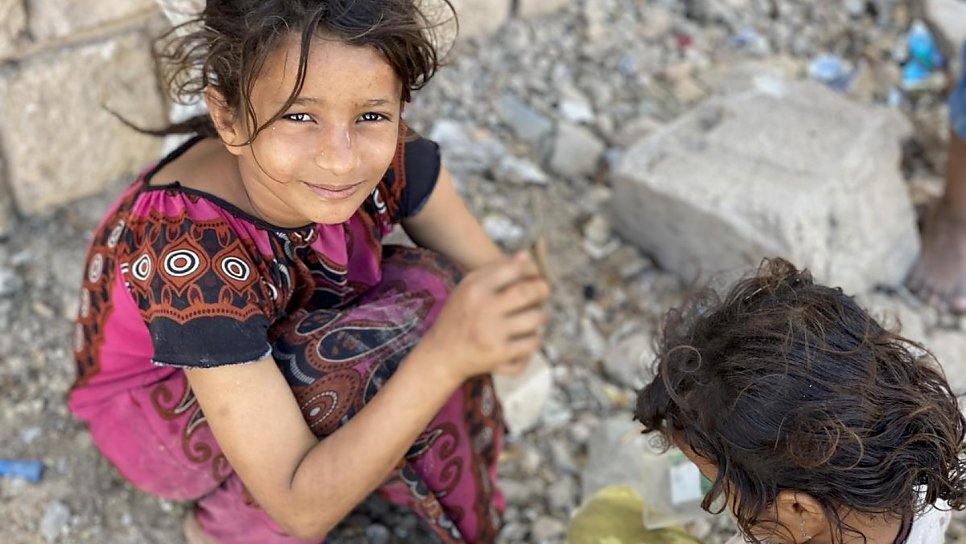IDMC study finds more people than ever displaced by violence inside their own countries, but a “wind of change” means there is a greater willingness to tackle the issue.

Ipteehal, 9, plays her sister outside the unfinished building where they live with other displaced families in Al Mukalla, Yemen.
The report reveals that 8.5 million new displacements resulting from conflict or violence were recorded in 2019. Another 25 million were triggered by disasters such as cyclones and hurricanes.
IDMC’s director, Alexandra Bilak, spoke with Kristy Siegfried from UNHCR’s global communications service about some key developments in the past year, including progress that governments have made in addressing the issue of internal displacement. She also reflected on her chief concerns in 2020, especially in the context of the coronavirus pandemic.
What are some of the key findings from your report on internal displacement in 2019?
The headline this year is that when it comes to total numbers, we’ve recorded the highest number ever of people living in internal displacement as a result of conflict and violence – 45.7 million by the end of the year. The majority are in a handful of countries: Syria, Colombia, the Democratic Republic of the Congo, Yemen and Afghanistan. With the exception of Colombia, those countries all had the largest numbers of new conflict-related displacements in 2019. There is a huge burden being shouldered by these countries that already had large and protracted caseloads of internally displaced people (IDPs).
For the first time this year, we now also have a total figure for people who remain internally displaced by disasters (5.1 million). We’ve only ever been able to report on new individual disaster displacements (rather than total numbers displaced at any one time) because of the multiple data gaps. There are still a huge number of gaps, so it’s likely to be the tip of the iceberg.
When you talk about new displacements, are you talking about the number of individuals displaced or the number of movements?
It’s the number of movements. So new instances of internal displacement could actually be the same family moving from one place and then another. There’s often a misconception that it represents the number of people.
Μοιράσου το στο Facebook Μοιράσου το στο Twitter